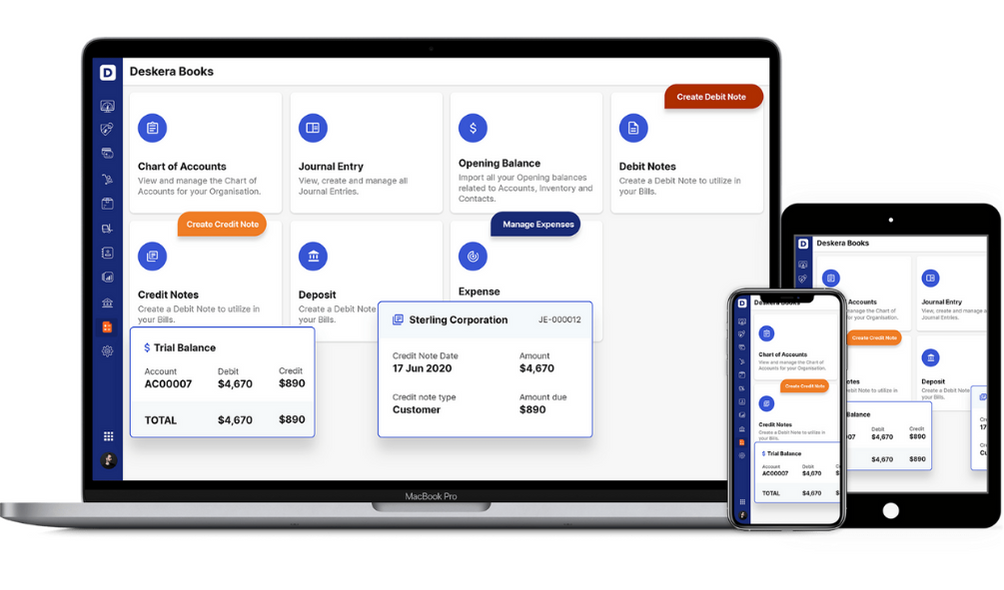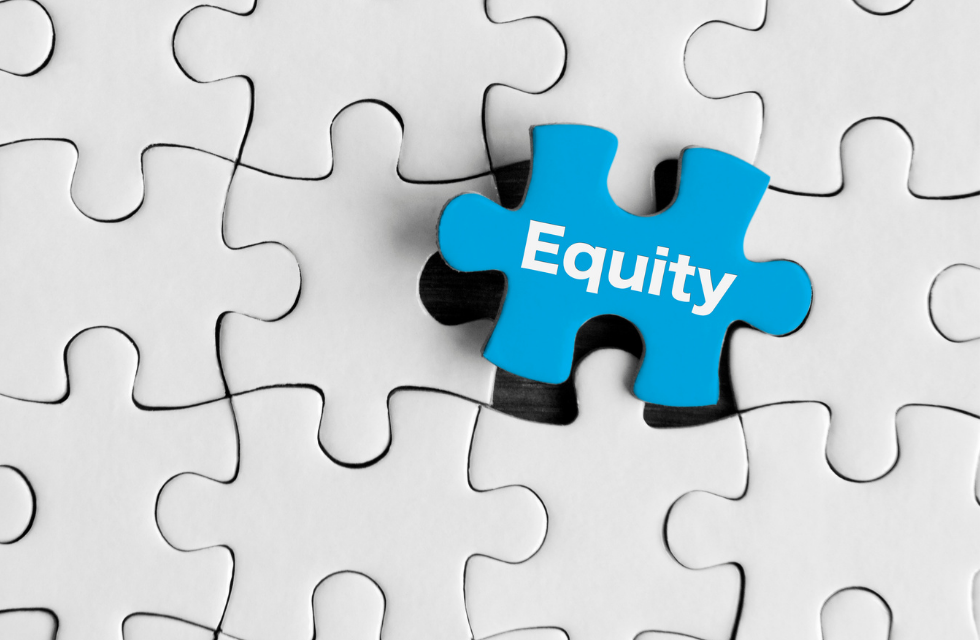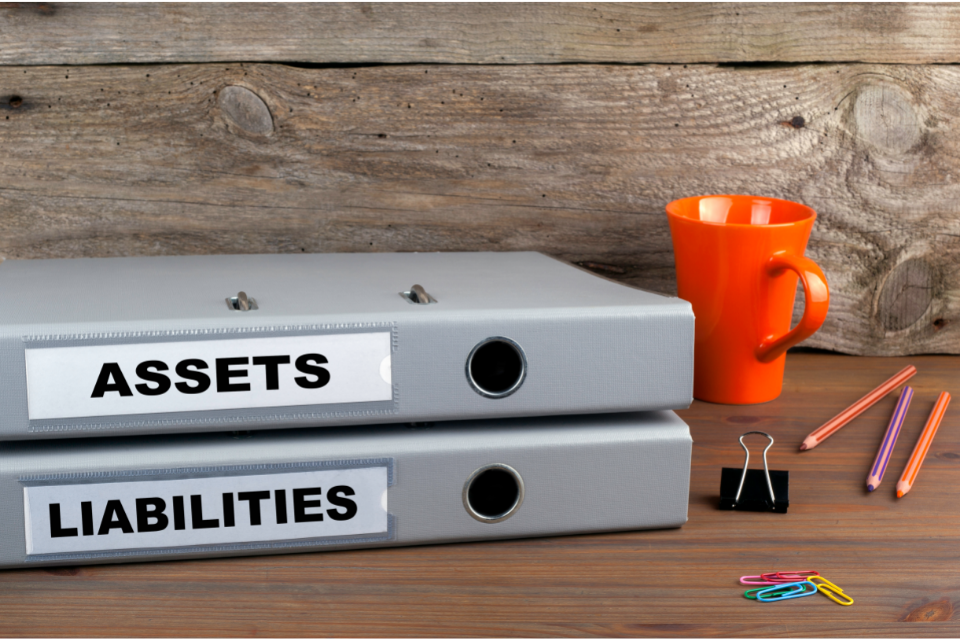Ever wondered how much cash you as a shareholder would get if a firm was dissolved, all of its assets were sold, and all debts were settled? Now let's talk about shareholders equity, often known as shareholder's capital or net assets.

In this article, we'll examine shareholder's equity in greater detail, including what it is, how to calculate it, its components, where it appears on the balance sheet, and instances of shareholders equity. Following are the topics covered:
- What is Shareholder’s Equity?
- How to Calculate Shareholder’s Equity
- Relevance and Uses of Shareholder’s Equity
- Shareholder’s Equity FAQ’s
- Key takeaways
What is Shareholders Equity?
When a firm issues common shares and preferred shares in addition to its retained operating profits, this is referred to as shareholder equity, stockholder equity, or shareholder net worth.
When reviewing financial statements, information from shareholders equity is quite helpful. In liquidation situations, stock holders are paid last in line after debt holders. As a result, bondholders receive payment before equity holders.
In order to assess total solvency, loan holders are therefore not overly concerned with the value of equity beyond the basic level of equity. But because stockholders' equity may only be paid out after bondholders' equity has been paid out, shareholders are worried about both liabilities and equity accounts.
Types of Equity
Equity comes really into two major categories:
- Contributed Capital - This is the value you added to the organization. It could be money, property, tools, etc. In return for their financial contributions, investors typically obtain an ownership interest in the company.
- Retained Earnings - Revenue - Expenses - Dividends or Distributions to Owners make up retained earnings.
Components of Shareholders Equity
Shareholders Equity is influenced by several components:
- Share Capital – Share capital is the amount that the reporting company receives from transactions with its owners.
- Retained Earnings – Retained Earnings and Accumulated Other Comprehensive Income are amounts gained through income (for IFRS only).
- Net Income & Dividends – Dividend payments decrease retained profits whereas net income boosts them.
1. Share Capital
Share Capital (contributed capital) is the term used to describe funds that the reporting firm has received from shareholder transactions. Generally speaking, companies can issue either common shares or preferred shares. In the event of a liquidation or dividend payment, common shares reflect residual ownership in the company, and they can only be paid after preferred shareholders have been paid first. Through the issuance of shares, stockholder contributions were gathered and represented by the share capital. Share capital consists of:
- Treasury share
- Common stock capital
- Additional paid-in capital
- Preferred stock capital
More Share Terminology
In accounting for share-related transactions, a few more phrases are crucial. The number of shares authorized is the total number of shares that the corporation may issue under the articles of incorporation of the business. The phrase "number of shares issued" refers to the total number of shares that the corporation has issued which may or may not be owned by outside investors.
The term "outstanding shares" refers to shares that are only owned by outside investors, whereas "treasury shares" relate to shares owned by the issuing business. The relation can be seen as follows:
Shares Authorized ≥ Shares Issued ≥ Shares outstanding
2. Retained Earnings
Profits made by a company that are not paid out as dividends to stockholders (shareholders) but rather are set aside for reinvestment in the company are known as retained earnings (RE). Working capital, the purchase of fixed assets, or debt repayment are just a few uses for retained earnings.
Retained earnings, commonly referred to as accumulated profits, are the total revenue generated by the company less dividends paid to shareholders.
Dividend distributions are deducted after adding the beginning retained earnings balance to the net income or loss to determine retained earnings. A statement of retained profits, which summarizes the changes in retained earnings for a given time period, is also kept.
The Retained Earnings formula is as follows:
3. Dividend Payments
The dividends are the third factor that has an impact on shareholders equity on the balance sheet.
Companies are under no duty to distribute dividends unless the board has legally declared them. In terms of dividend payments, there are four critical dates, and two of them call for particular accounting treatments in terms of journal entries. Companies may pay dividends to their shareholders in a variety of ways, with cash and stock dividends being the most common.
Businesses may repurchase shares, particularly if they are unable to effectively deploy equity capital for expansion potential. Any stock that is bought back is referred to as Treasury Shares. While Treasury Shares are still considered issued shares, they are no longer considered outstanding shares and are not taken into account when calculating EPS or dividends per share. Companies have two options:
- Repurchase shares, which would increase the number of shares in the Treasury and decrease shareholders' equity; or
- Retire shares if they don't anticipate using them for future financing. The quantity of shares issued by a firm is decreased when treasury stock is retired.
4. Common Stock
Shareholders’ equity is significantly influenced by the total number of outstanding common shares of a firm, including restricted shares allocated to insiders, corporate officers, and the general public. The sum recorded is based not on the current market value but rather the par value of the common and preferred stock sold by the corporation.
The issue price of shares is their par value. When the corporation repurchases its shares, this amount decreases.
Formula for Equity
The fundamental accounting equation is the quickest and easiest way to determine shareholders’ equity.
The Formula
You must add long-term assets to current assets to get the total assets for this equity formula. Cash, inventories, and accounts receivable comprise current assets.
The value of capital assets and property, including patents, structures, machinery, and notes receivable, are considered long-term assets. The company ought to have owned these assets for at least a year. It's significant to note that certain assets, such as fixed assets, do not have their recorded values increased to reflect rises in market value.
Add the current obligations, such as accounts payable and short-term debts, and the long-term liabilities, such as bonds payable and notes, to arrive at the total liabilities for this equity formula.
Common shareholders’ equity
The value of the common shares on a company's balance sheet is known as the common shareholders equity. It shows how much money or value a business has made by selling common shares to equity investors.
Common share capital or common stock capital is typically listed as a line item in the share capital account.
How to Calculate Shareholders' Equity
It is possible to determine a company's shareholders' equity by deducting its total liabilities from its total assets, both of which are listed on the balance sheet. In the absence of a balance sheet, the shareholder's equity can be determined by adding up all assets and deducting all liabilities to get the shareholder's equity.
Accounting Equation
Utilizing the Accounting Equation or Balance Sheet Equation is the first method for calculating owner’s equity.
To calculate a company's equity, you essentially take its total assets and subtract its total liabilities.
The total assets of a corporation include both short- and long-term assets, such as:
- Intangible assets
- Cash
- Equipment
- Account receivables
- long-term investments
- short-term investments
- Inventory
- Property
- Capital assets
While long-term assets are less liquid, retained by the company for at least a year, or cannot be converted to cash within a year, current assets are liquid and can be converted to cash within the year.
The sum of the company's liabilities is the next component of the equation.
Total liabilities are the sum of a company's short- and long-term obligations, including:
- Leases
- short-term loans
- Term debt
- Taxes payable
- Pension obligations
- Accounts payable
- long-term loans
- Bond repayment
- Deferred revenue
- Commercial paper
Long-term liabilities are debt or financial obligations that must be repaid over a longer period of time than current liabilities, which are debt or financial obligations due within a year.
Both current assets and non-current assets can be included in total assets. Accounts receivable and inventory are examples of current assets because they can both be converted into cash within a year.
- Long-term assets include things like real estate, manufacturing facilities, equipment, and intangibles like patents that cannot be sold or used up within a year. You can also figure out the shareholders' equity by finding the sum in certain accounts in the general ledger.
- It includes any contributed capital or retained earnings in addition to the total amount of capital that shareholders provide a company in exchange for shares.
- Current liabilities and long-term obligations together make up total liabilities. Accounts payable and taxes due are examples of current liabilities that must be repaid within a year. Bonds payable, leases, and pension obligations are examples of long-term liabilities because they are all required for repayment over longer time frames.
Investor’s Equation
The information on the company's share capital and retained earnings is used to determine shareholders' equity in the second method. The methods listed below can be used to derive the shareholder's equity formula according to the second method:
Step 1: Start by gathering the balance sheet's paid-in share capital, retained earnings, accumulated other comprehensive income, and treasury stock.
Step 2: The total of paid-in share capital, retained earnings, and accumulated other comprehensive income, less treasury stock, can be used to determine the stockholder's equity calculation.
Example of Shareholders' Equity Calculation
Example 1:
From the real balance sheet for XYZ Ltd., this was obtained from their annual report. XYZ Ltd.'s total assets were $12 billion and its total liabilities were $5 billion as of March 31, 2021.
Solution:
At that time, XYZ Ltd. had $7 billion in total shareholders' equity (or assets minus liabilities).
Preferred stock, common stock, retained earnings, and accumulated other comprehensive income are all included in shareholders' equity.
Example 2:
In order to determine the equity of the shareholders, let's use the company ABC Ltd as an example. The company manufactures copper plates as a business. According to ABC Ltd's balance sheet for the fiscal year that concluded on March 31, 20XX, the paid-in share capital was $60,000, the retained earnings were $140,000, and the business repurchased $32,000 worth of stock throughout the year. Determine the company's shareholder equity based on the provided information.
- Given, Paid-in share capital = $60,000
- Retained earnings = $140,000
- Treasury stock = $32,000
Solution:
The information used to determine the shareholders' equity of company ABC Ltd. is presented above.
As a result, it is possible to calculate the shareholder equity of firm ABC Ltd. as follows:
Shareholder Equity Formula = Paid-in share capital + Retained earnings + Accumulated other comprehensive income – Treasury stock
= 60,000 + $140,000 + $0 – $32,000
Shareholder’s equity of company ABC Ltd= $168,000
As a result, as of March 31, 20XX, ABC Ltd's stockholders' equity was $140,000.
Example 3
In 2018, Company PQR's total assets would be $17.8 million, while its accrued liabilities would be $5.6 million. By subtracting the company's obligations from its assets for that fiscal year, the shareholders equity will be determined. Therefore, shareholders' equity is $12.2 million ($17.8 - $5.6).
This diagram merely shows how shareholder's equity is determined. Equity and shareholders' equity are two different things. Equity is the portion of a company's value that can be attributed to its owners. The remaining claims of a corporation's owners against the company after its debts have been settled are referred to as shareholders equity.
This is the sum that remains for the benefit of the company's shareholders after all liabilities have been subtracted from the assets.
What is shareholders equity on a balance sheet?
The amount of cash received from investors who bought equity stocks in the company, less any dividends paid to shareholders, is shown as shareholder's equity on the balance sheet. This includes all of the cumulative profits earned by the company over the years.
- You might think of shareholders equity as the value that remains to the company's stockholders after all of the company's assets have been sold off, the company's creditors, and the company's debt has all been settled.
- In the event of negative shareholder equity, the company's debt holders and creditors will not be paid, leaving the stockholders with nothing left over.
- If the corporation has positive shareholder equity, the stockholders can anticipate receiving a distribution of any money that remains after all liabilities and debts have been settled.
A Statement of Shareholders' Equity, which is part of a company's balance sheet, is a legally required financial document that details changes in a company's shareholder's equity value over the course of a year.
The statement gives shareholders an overview of the company's performance. It is also utilized by third parties like lenders who want to know if the business is performing its debt obligations and maintaining minimum equity levels.
Is total equity the same as shareholders equity
Shareholder equity and total equity could not be the same thing. The "book value" of a company's equity less all liabilities is its shareholders' equity. It stands for an accounting value that is distinct from the market value or actual value of a corporation. Actual equity value or equity book value is both examples of total equity.
When speaking of actual equity, you are effectively taking into account the whole market value of the company's assets minus the sum of its liabilities. The overall equity (market value) in this situation will not be equal to the whole shareholder equity (book value).
Total equity (book value) might be equivalent to total shareholder equity on a company's balance sheet if you look at it from the standpoint of book value.
Shareholder equity ratios
You may compute a number of shareholders' equity ratios using the total value of shareholders' equity, including the debt-to-equity ratio, return on equity, and book value of equity per share.
Debt-to-Equity ratio (D/E)
The debt-to-equity ratio, or D/E ratio, is determined by dividing the total liabilities of the business by the equity held by shareholders.
Book value per share (BVPS)
The value available to common shareholders divided by the total number of outstanding shares in a corporation is known as book value per share (BVPS). Total equity less preferred equity divided by the number of outstanding shares is the BVPS formula.
Return on Equity ratio (ROE)
Using the return on equity ratio, equity investors can determine the return the company made on their equity investment (ROE). In essence, a company's net income is divided by the equity of its shareholders to calculate its return on equity.
Relevance and Uses of Shareholder’s Equity
Understanding the shareholder's equity formula is crucial from the perspective of an investor since it shows the true worth of the shareholders investment in the company. A line item for the shareholder's equity can be found in the balance sheet of a business or enterprise. The company's shareholder's typically care about the company's profits and are interested in their equity. A shareholder's acquisition of firm stock over time also results in capital gains for them and grants them the ability to vote in board of directors elections. The shareholders’ interest in the company's equity is maintained by all such payouts.
- Compared to bondholders or debt holders, firm shareholders are typically more interested in the company's stock.
- In the case of a company's liquidation, creditors and debt holders will receive payment and priority over owners.
- However, shareholders may only anticipate receiving liquidation residual value when all liabilities have been settled using the company's assets.
Equity held by shareholders may be negative or positive. If it's in the black, then the company's assets are more than its liabilities. If it's negative, the company has more liabilities than assets, which could put off investors who consider such businesses to be risky investments. Equity held by shareholders, however, is not the only measure of a company's financial stability. Therefore, it should be used in conjunction with other metrics to provide a more complete view of how a business is doing.
Modeling Financial Applications
In financial modeling, calculating shareholder's equity is a crucial step. Typically, this comes last in the process of projecting the balance sheet components. You can see the shareholder's equity line on the balance sheet completed in the example screenshot of a financial model that is shown below.
Personal Investing Applications
We can use this information to guide our own individual investment decisions while keeping in mind various debt and equity products. Although a lot of investment choices are based on the amount of risk we are willing to face, we cannot ignore all the important factors mentioned above.
While dividend payments from owning shares are optional and not fixed, annual payments on bonds are contractual obligations that are guaranteed until the issuer defaults.
Bondholders come first in the payment and liquidation hierarchy, followed by preferred shareholders and then common shareholders. Due to the fact that interest payments are tax deductible and since debt typically provides investors with a lesser return than equity, debt is the least hazardous investment from the standpoint of both investors and businesses.
But debt is also the riskiest source of funding for businesses because the latter must honor the agreement with creditors to pay interest on a regular basis regardless of the state of the economy.
Shareholder’s Equity FAQ’s
How Do Book Value And Shareholder Equity Differ?
Shareholders' equity and book value are synonymous but are employed in various ways. Shareholders' equity may be interpreted by one investor as the company's book value of equity and as a gauge of the company's value if it were to be sold. To assess a company's value, another investor can look at elements of shareholders' equity such retained earnings.
Can the equity of shareholders be negative?
Negative shareholders' equity would be extremely uncommon. Unrealized losses, for example, would have to be negative because a company's stock value cannot fall below zero. A corporation would be insolvent if its shareholders' equity turned negative.
How Do Shareholders' Equity Affect Stock Repurchases?
Companies that buy back stock on the open market typically use the shares for treasury purposes, which exempt them from counting toward the total number of shares outstanding. Equity for shareholders decreases when fewer shares are outstanding.
Low Shareholder's Equity: What Does It Mean?
Low or falling shareholder's equity may be a sign of a struggling company that relies heavily on debt funding. However, financial distress is not always indicated by low or negative shareholders equity. Due to their reduced expenses, newer or conservatively run businesses may not need as much capital to generate free cash flow.
Because they are rewarding shareholders through the distribution of profits rather than reserving this cash for growth, companies that regularly distribute and raise dividends may also have lesser shareholder's equity.
How can Deskera Help You?
Deskera Books can help you automate and mitigate your business risks. Creating invoices becomes easier with Deskera, which automates a lot of other procedures, reducing your team's administrative workload.

Sign up now to avail more advantages from Deskera.
Key Takeaways
- The net value of a corporation is represented by shareholders' equity. The gap between a company's assets and liabilities is referred to as shareholders' equity, sometimes known as stockholders' equity. Additionally known as book value of equity.
- When determining shareholders' equity, it's critical to take the company's retained earnings into account. A business uses this as a way to save some of its net profits. These gains are saved rather being distributed to shareholders.
- Corporations that sell shares on the stock market are the only ones that must account for shareholders' equity. The owner's equity and partners' equity are the related notions for sole proprietor ships and partnerships.
- A company's balance sheet will show sufficient assets to pay all obligations and liabilities if the shareholder equity value is positive; if it is negative, the opposite is true.
- The corporation issues and later buys back treasury shares. Shareholders' equity is reduced by the purchase of these shares.
Related Articles












